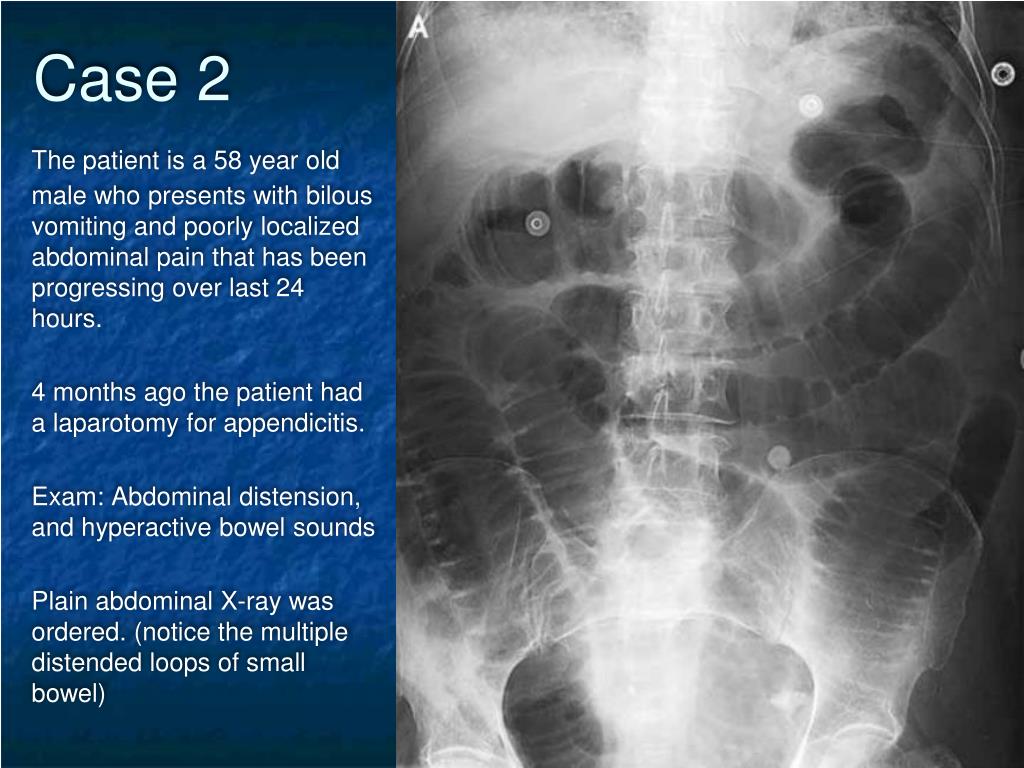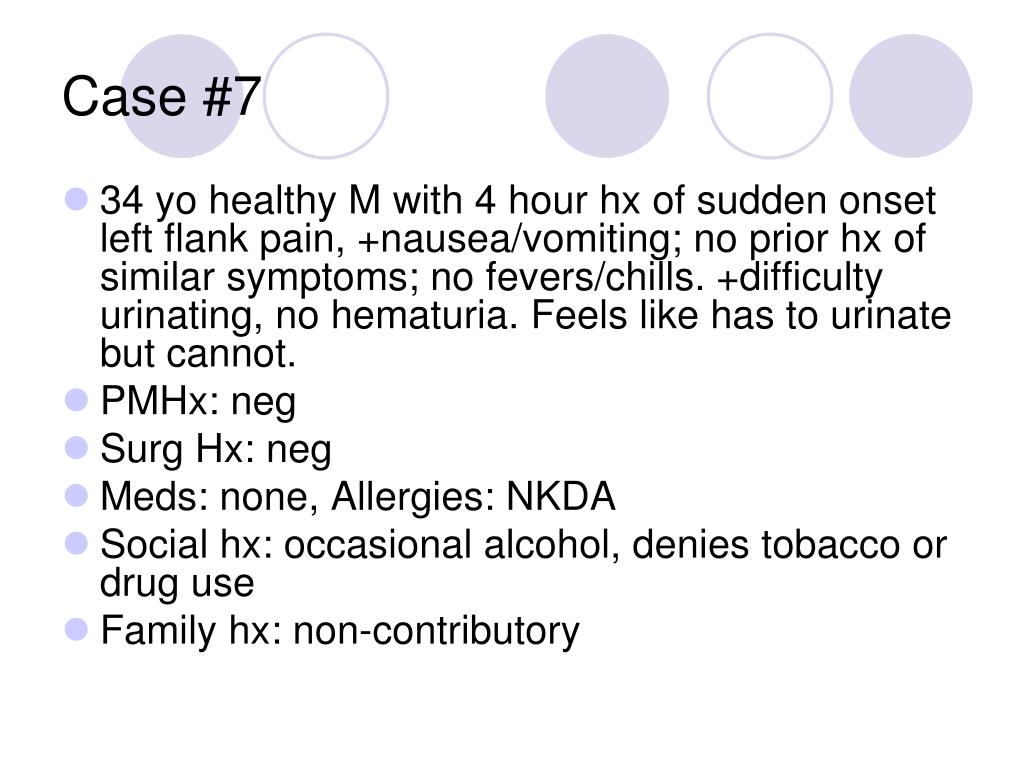

5, 11, 12 Other causes of closed-loop obstructions are internal hernias, congenital bands, and intestinal malrotation. Intestinal volvulus, the prototypical closed-loop obstruction, causes torsion of arterial inflow and venous drainage, immediately compromising bowel viability.

A closed-loop obstruction, in which a segment of bowel is obstructed proximally and distally, may undergo this process rapidly and is considered a surgical emergency. This may compromise arterial flow, causing ischemia, necrosis, and ultimately perforation. When intraluminal pressure exceeds venous pressures, loss of venous drainage exacerbates edema and congestion of the bowel. 10 This occurs more prominently in complete obstruction. Proximal to the point of obstruction, the intestinal tract dilates, filling with gastrointestinal secretions and swallowed air, and increasing luminal pressures. In a low-grade (incomplete) intestinal obstruction, some gas and/or fluid passes beyond the point of obstruction, whereas nothing passes beyond it in a high-grade (complete) SBO. Surgical exploration is recommended for most patients in whom three to five days of nonoperative management is ineffective, or who clinically deteriorate at any point during hospitalization.Ĭonservative management beyond 48 hours does not diminish the need for surgery, but increases surgical morbidity. Several clinical trials have shown that nonoperative management resolves most uncomplicated small bowel obstructions.

Surgical involvement is associated with improved patient satisfaction, shorter time to operation when required, and shorter hospital stay.Ĭlinically stable patients should be treated with bowel rest, tube decompression, and intravenous fluid resuscitation.

Evidence of vascular compromise or perforation, or failure to resolve with adequate nonoperative management is an indication for surgical intervention.Ī closed-loop obstruction should be treated as a surgical emergency.Ī closed-loop obstruction may quickly lead to compromised arterial flow, ischemia, necrosis, and ultimately perforation.Ībdominal radiography is an appropriate initial examination in patients with suspected intestinal obstruction.Īlthough CT has greater sensitivity and specificity, plain radiography may be considered as an initial diagnostic option, particularly in patients who are hemodynamically unstable or unable to undergo cross-sectional imaging, or who have equivocal clinical findings.ĬT with intravenous or enteric contrast media is recommended in patients with suspected intestinal obstruction.ĬT can reliably determine the cause of obstruction and associated complications.Īdmission to or consultation with a surgical service should occur upon diagnosis of intestinal obstruction. Patients with fever and leukocytosis should receive antibiotic coverage against gram-negative organisms and anaerobes. Management of uncomplicated obstructions includes intravenous fluid resuscitation with correction of metabolic derangements, nasogastric decompression, and bowel rest. Imaging with abdominal radiography or computed tomography can confirm the diagnosis and assist in decision making for therapeutic planning. Laboratory evaluation should include a complete blood count, metabolic panel, and serum lactate level. Abdominal distension, tympany to percussion, and high-pitched bowel sounds are classic findings. The clinical presentation generally includes nausea, emesis, colicky abdominal pain, and cessation of passage of flatus and stool, although the severity of these clinical symptoms varies based on the acuity and anatomic level of obstruction. It is most commonly induced by intra-abdominal adhesions, malignancy, and herniation. Acute intestinal obstruction occurs when the forward flow of intestinal contents is interrupted or impaired by a mechanical cause.


 0 kommentar(er)
0 kommentar(er)
